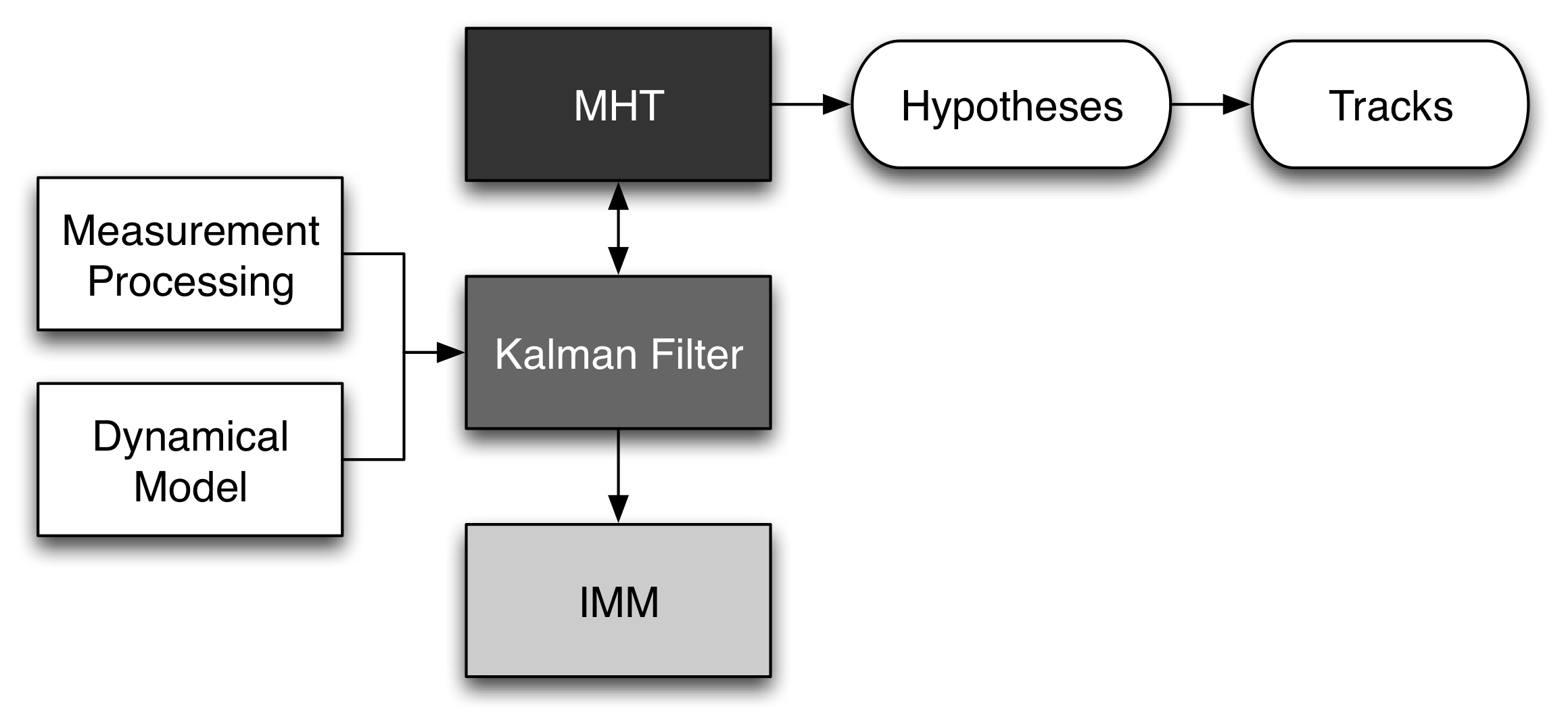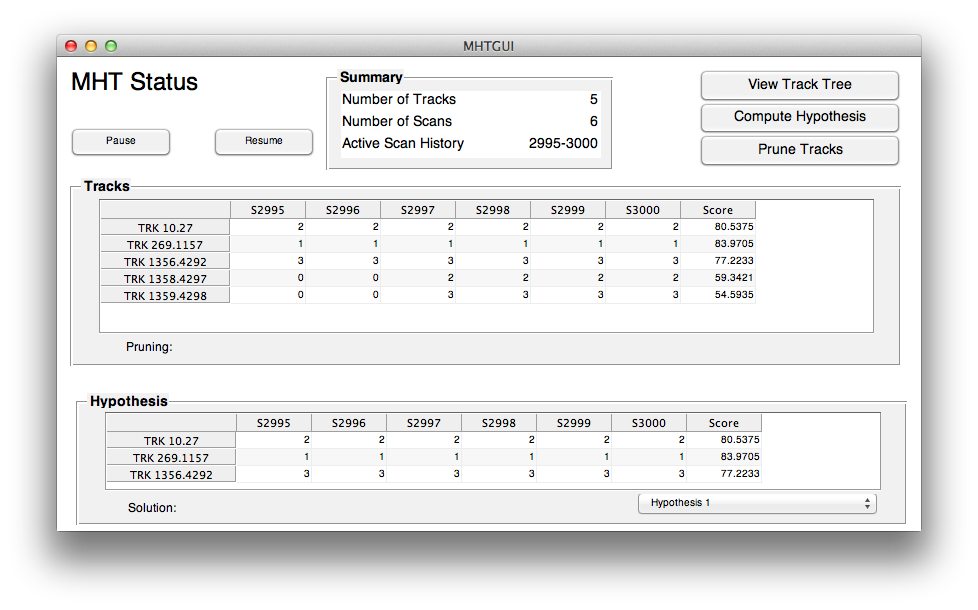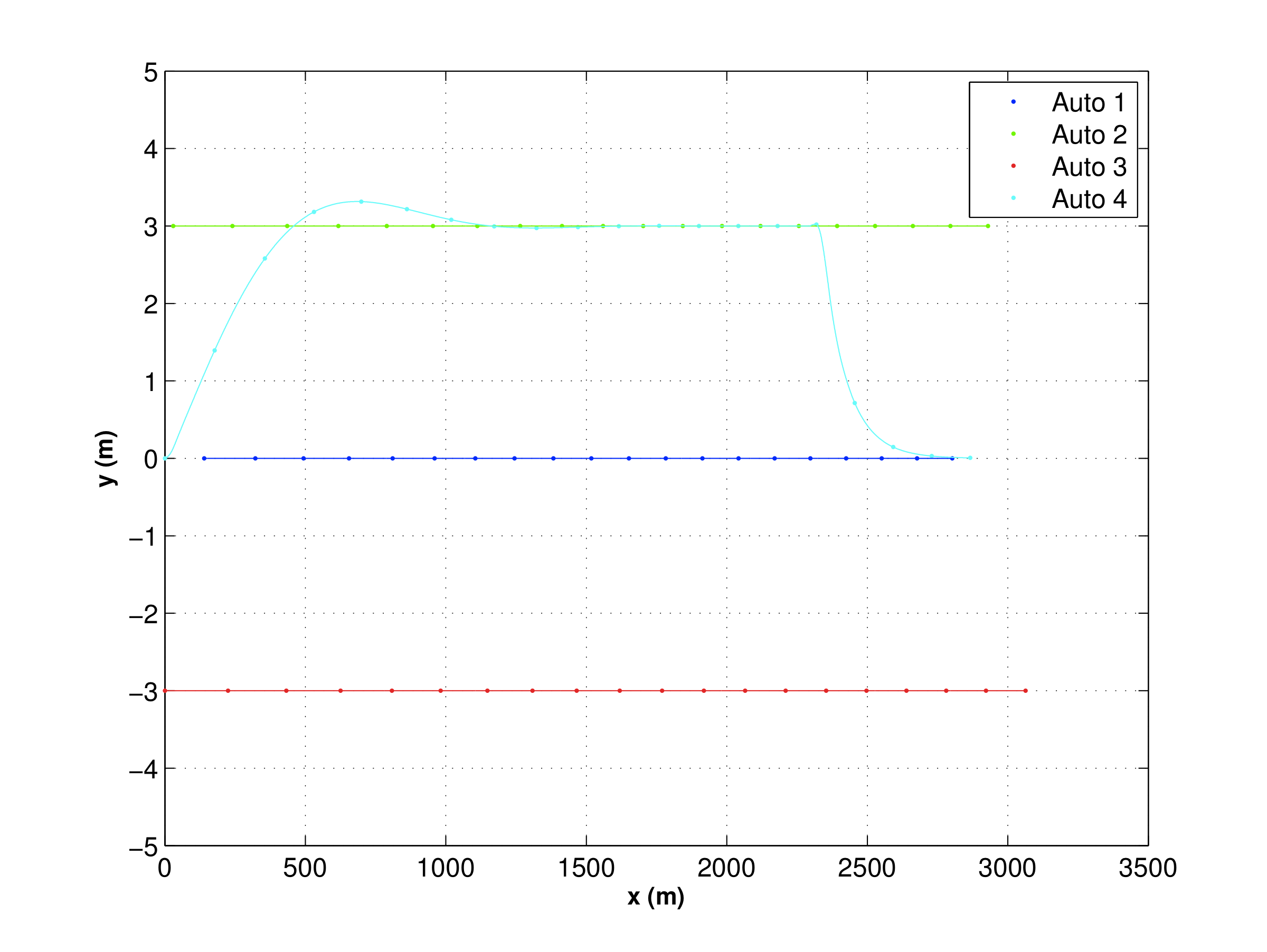
|
SUPPORT SITE |
|

The Target Tracking Module provides a fast new implementation of Track-Oriented Multiple Hypothesis Testing (MHT) that provides robust and reliable results across different problem domains. Track-Oriented MHT is a powerful technique for assigning measurements to objects when the number of objects is unknown or changing. It is absolutely essential for accurate tracking of multiple objects such as in rush hour traffic.

The Target Tracking Module uses a powerful new track pruning algorithm that does the track pruning in one step. Because of its speed, ad-hoc pruning methods are not required, leading to more robust and reliable results. The track management software is, as a consequence, quite simple.
The module leverages the open-source GLPK library for fast and reliable optimization. Kalman Filters and Interactive Multiple Models (IMM) are included with the Core Control Toolbox.
In many situations a sensor system must track multiple targets, like in rush hour traffic shown in the photo. This leads to the problem of associating measurements with objects, or tracks. This is a crucial element of any practical tracking system.
The figure shows the general tracking problem. Two scans (concurrent sets) of data are shown.
When the first scan is done there are two tracks. The uncertainty ellipsoids shown are based on previous information. In the k-1 scan, three measurements are observed. Measurement 1 and Measurement 2 are within the ellipsoids of the two tracks but Measurement 2 is in both. It may be a measurement of either of the tracks or a spurious measurement. In scan k four measurements are taken. Only Measurement 4 is in one of the uncertainty ellipsoids. Measurement 3 might be interpreted as spurious but it is actually due to to a new track from a third vehicle that separates from the blue track. Measurement 1 is outside of the red ellipsoid but is actually a good measurement of the red track and (if correctly interpreted) indicates that the model is erroneous. Measurement 4 is a good measurement of the blue track and indicates that the model is valid.
Hypotheses are sets of tracks with consistent data, that is, where no measurements are assigned to more than one track.
The track-oriented approach recomputes the hypotheses using the newly updated tracks after each scan of data is received. Rather than maintaining, and expanding, hypotheses from scan to scan, the track-oriented approach discards the hypotheses formed on scan k-1. The tracks that survive pruning are predicted to the next scan k where new tracks are formed, using the new observations, and reformed into hypotheses. Except for the necessity to delete some tracks based upon low probability or N-scan pruning, no information is lost because the track scores, that are maintained, contain all the relevant statistical data.
The MHT GUI provides the user with a snapshot of the MHT system thinking. It shows tracks with their associated measurements and the resulting hypotheses. This makes it easy to validate its decisions and to debug your software.


This demonstration involves multiple cars passing another car which has a radar system that measures range, range rate and azimuth. The radar has a limited field of view and range. The first figure shows the four cars in the simulation. At first the car with the radar, Auto 1, cannot see any of the cars until Auto 4 begins to pass it. The passing car is quickly acquired.
The tree below shows the "thinking" of the MHT algorithm. The blue bars are the score for each track. This tree shows that three tracks have established good statistics and do represent the three automobiles. The two on the right are tentative and change with time.
